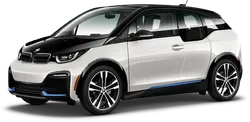

BMW i3 - BMW i3 Generation 1 G28 Overview
Explore the BMW i3 and its Generation 1 G28 features. Discover how this electric car stands out in Portugal, offering exceptional performance and innovative design.
The BMW i3 Generation 1, also known as the G28, is a pioneering electric vehicle that made its debut in 2013. It marked a significant step for BMW in the realm of sustainable mobility and set a new standard for urban e...
Technical Specifications
Select Version
Dimensions
Engine
Driving
Others
History and Features
Mycarro AI
Apr 26, 2025
The BMW i3 Generation 1, also known as the G28, is a pioneering electric vehicle that made its debut in 2013. It marked a significant step for BMW in the realm of sustainable mobility and set a new standard for urban electric cars. The i3 served not only as a vehicle but as a statement of BMW’s commitment to innovation, sustainability, and progressive design. This article will delve into the various aspects of the G28, exploring its design philosophy, performance, technology, and overall impact on the automotive industry.
Design Philosophy
The design of the BMW i3 is strikingly distinct from traditional BMW models. The G28 is characterized by its compact dimensions, tall stance, and unique styling. The vehicle features a lightweight carbon-fiber-reinforced plastic (CFRP) body structure which lowers the overall weight and enhances efficiency. The i3 showcases a two-tone color scheme often seen in eco-friendly cars while maintaining an unmistakable BMW presence. Bold, asymmetric doors that open in a “coach-style” manner enhance the car's accessibility, setting it apart visually and functionally.
The interior of the i3 is equally innovative, with a focus on sustainability. The cabin is crafted from recycled materials alongside responsibly sourced woods, reflecting BMW’s commitment to environmentally friendly practices. The clean, minimalist aesthetic of the cabin incorporates state-of-the-art technology while providing ample space for passengers. Attention to detail can be seen throughout, making the driving experience not only about performance but also about comfort and style.
Performance and Efficiency
Performance is often a vital aspect when considering a car, and the i3 does not disappoint. The G28 was powered by a synchronous electric motor, delivering an impressive 170 horsepower and 184 pound-feet of torque, making it agile in urban traffic. The dynamic handling is complemented by a low center of gravity, thanks to the vehicle’s lightweight construction. The i3 can accelerate from 0 to 60 mph in approximately 7.2 seconds, showcasing its sprightly character.
One of the key features of the BMW i3 is its range. Initially, the vehicle offered a range of about 81 miles on a single charge, but with advancements over the years, the later models in the series can reach up to 153 miles. This made the i3 practical for daily city commutes with the scalability for occasional longer trips through the option of an available range extender, which is a small gasoline engine that helps charge the battery when it runs low.
Technology Integration
As a forward-thinking vehicle, the i3 is jam-packed with advanced technology. The central infotainment system boasts a high-resolution touchscreen with intuitive controls, voice activation, and navigation. Unique to the i3 is the integration of BMW ConnectedDrive, which allows for seamless connectivity, providing drivers with real-time traffic updates, remote control functions via smartphone apps, and a host of driver-assistance systems designed to enhance the overall driving experience.
Safety features were also a top priority in the design of the i3. The G28 received high ratings in crash tests, thanks to its innovative construction and an array of safety technologies, such as collision warning and emergency braking. Overall, the i3's technology not only prioritizes convenience but also elevates safety and efficiency.
Market Impact and Legacy
The introduction of the i3 created ripples in the automotive industry, serving as a pioneer among electric vehicles. It helped to shape consumer perceptions of electric cars, proving that they could be stylish, fun to drive, and environmentally responsible. The emphasis on sustainability and design helped set new benchmarks in the EV segment, paving the way for competitors to follow suit.
Furthermore, the i3’s success demonstrated the viability of alternative fuels in everyday driving, accelerating the industry's shift towards more electric and hybrid offerings. BMW's i Division would go on to produce other electric models, continuously responding to an ever-evolving market that increasingly prioritizes eco-friendliness without compromising on performance.
Conclusion
The BMW i3 Generation 1 (G28) stands as a significant milestone in the evolution of electric vehicles. Through its bold design, impressive performance, advanced technology, and commitment to sustainability, it has shaped the future of automotive transportation. The i3’s legacy continues to inspire future innovations in the electric vehicle space, making it a noteworthy car in the history of not just BMW, but the automotive industry itself.
